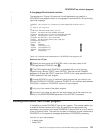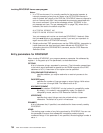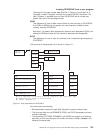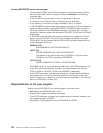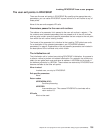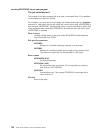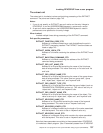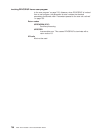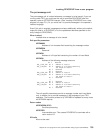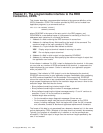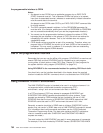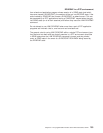The put-message exit
The put-message exit is invoked whenever a message is to be issued. If you are
running under TSO, you could use this exit to terminate DFHCSDUP after the
operator inputs an ATTENTION interrupt. (See “Invoking DFHCSDUP from a user
program” on page 751.) Or you could use it to provide messages in the operator’s
national language.
Even if this exit is supplied, messages are always additionally written to the default
output file (that is, to SYSPRINT, or to the replacement ddname specified on the
entry linkage to DFHCSDUP).
When invoked
Invoked when a message is to be issued.
Exit-specific parameters
UEPMNUM
Address of a 4-character field containing the message number
UEPMDOM
Reserved
UEPINSN
Address of a 2-byte field containing the number of insert fields
UEPINSA
Address of the following message structure:
DS F Reserved
INS_1_TEXT_PTR DS A Address of insert 1
INS_1_LEN_PTR DS A Address of a fullword containing
the length of insert 1
DS F Reserved
DS F Reserved
INS_2_TEXT_PTR DS A Address of insert 2
INS_2_LEN_PTR DS A Address of a fullword containing
the length of insert 2
DS F Reserved
...
DS F Reserved
INS_n_TEXT_PTR DS A Address of insert n
INS_n_LEN_PTR DS A Address of a fullword containing
the length of insert n
DS F Reserved
The exit-specific parameters provide a message number and insert fields
only, to enable you to provide messages in the language of your TSO
operators. The structure pointed to by UEPINSA is repeated as many times
as UEPINSN requires.
Return codes
UERCNORM (X'00')
Continue processing.
UERCERR
Irrecoverable error. This causes DFHCSDUP to terminate with a
return code of ‘8’.
XPI calls
Must not be used.
invoking DFHCSDUP from a user program
Chapter 30. User programs for the system definition utility program (DFHCSDUP) 759



